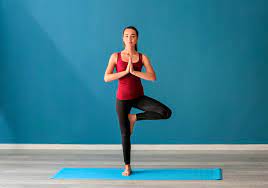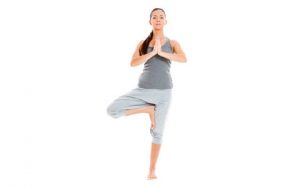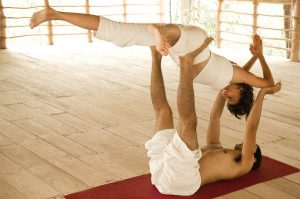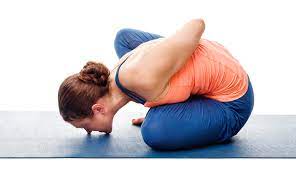Benefits of Yoga: History, Health & It’s Types
Yoga known to be an ancient practice was derived from the Sanskrit word “yum” which means union.
According to researchers, this practice started over 5000 years ago. Although in the modern world, it is another form of exercise.
However, its philosophy is based on the connection of the body, mind and spirit. As this transcends an ordinary form of routine postures and poses.
In this post, we would explore the History, branches, modern types and the health benefits of yoga.
CONTENTS
- History
- Branches of yoga
- Modern types of yoga
- Health benefits of yoga.
HISTORY
The origin and development of Yoga can be divided into four periods of evolution, which preceded the birth of modern Yoga.
The Vedic period
There are no proven record to verify that Yoga began 5000 years ago, however the Vedic period was known to be periods of ceremonies and rituals for the purpose of mind enlightenment and freedom.
The Preclassical period
In this period Yoga was refined by the Brahmans which led to the documentation of the practices in 200 scriptural texts called the Upanishads & “Bhagavad Gita” being the most popular and oldest scriptural yoga texts.
The classical period
In the classical period the father of yoga “Patanjali” classified the yoga practice into eight limbs “The yoga ultra” which leads to the path of enlightenment for others to follow.
- Rama – Social/ ethical growth
- Nyasa – personal growth
- Asana – Posture practice
- Panama – breath control
- Pratyahara – sense control
- Dharana – concentration
- Dhyana – meditation
- Samadhi – Enlightenment
The post classical period
Yoga exploration was extended to the west, and various physical means of achieving enlightenment was documented.
This paved the way for the modern period.
The father of modern Yoga Tirumalai Krishnamacharya, was one of the influential teachers who Westernized Yoga philosophies.
The modern period
Hatha Yoga is based on physical practice. It’s the basis of modern yoga, mostly common at homes, gyms and studios.
And at the moment, the evolution of yoga is still underway as more styles and techniques are being introduced.
Branches of Yoga
Hatha Yoga
Hatha yoga is believed to achieve enlightenment by the use of physical force through body purification instead of the mind.
 Image source: google
Image source: google
Raja Yoga
It depends strictly on meditation. “Raja” meaning “Royal”.
This form of yoga is adhered to the eight limbs of yoga.
Enlightenment is achieved with the mind through intense meditation.
 Image source: google
Image source: google
Jnana Yoga
Jnana meaning “wisdom” which is the path of the scholars, and it’s considered to be the most difficult.
High intellect is required to gain mastery of this yoga practice.

Image source: google
Tantra Yoga
Tantra is the most obscured of all yoga, where enlightenment is achieved by meditating on deities.
Occasional sexual rituals are done at most tantra yoga schools.
 Image source: google
Image source: google
Bhakti Yoga
Bhakti yoga aims to achieve enlightenment by meditating on a supreme being.
It’s the “yoga of devotion” where practitioners devote to serving a deity or supernatural being through meditation and songs.
 Image source: google
Image source: google
Karma Yoga
Often referred to as the “Yoga of action” and it achieves enlightenment through selfless services to humanity.
Karma yoga practitioners believed that our present condition is a reward of our past actions.
 Image source: google
Image source: google
Types of Yoga
Choosing a yoga style can be overwhelming, especially if you are just starting.
There are many types of yoga, and each vary in intensity and style.
However, the list below will give you a head start until you find a style that suits you best.
Hatha Yoga
It includes the general yoga styles and postures, which involves less intense style.
This type of yoga teaches breathing and posture techniques & it’s best for beginners to achieve a calm state of mind.
 Image source: google
Image source: google
Vinyasa yoga
Vinyasa meaning “connection”, blends your breath to your movement to produce a continuous flow of postures.
It’s a rigorous style with high intensity flow & it’s recommended for expert yogis looking for ways to level up their style and fitness.
 Image source: google
Image source: google
Yin Yoga
Yin yoga is one of the slow-paced style which emphasized on holding poses for five or more minutes.
It helps to boost endurance and mindfulness. And also, this style of yoga is recommended for building patience.
 Image source: google
Image source: google
Bikram Yoga
Bikram is a very hot yoga, practiced under a high temperature around 40 °C.
This style incorporates breathing exercise, and leaves you with a calm state of mind after practice.
Although, the high temperature environment might be a turn off for you if you aren’t a fan of heat.
But it’s a great way to get yourself sweating.
 Image source: google
Image source: google
Ashtanga yoga
K. Pattabhi Jois developed the ashtanga yoga (also known as the power yoga) in the 20th century.
It’s made up of 6 series, with each series increasing in difficulty.
This style blends both your breath and swift movement and boost your respiratory system and lifestyle in general.
 Image source: google
Image source: google
Iyengar Yoga
This style was founded by B.K. Iyengar.
During iyengar yoga class, poses are maintained longer than any other type of yoga.
Because more focus is placed on pose quality rather than quantity, to provide the maximum benefits.
 Image source: google
Image source: google
Restorative yoga
Yoga Beginners looking for a way to restore both their mind and body can opt in for this style because it’s easier.
It stretches the muscles and makes you relaxed & usually, poses are held longer in restorative yoga, which helps to cleanse your mind.
 Image source: google
Image source: google
Health Benefits of Yoga
The majority of mental health patients employ the practice of yoga as a natural remedy due to the therapeutic effect.
It calms the mind and creates a feeling of relaxation.
And according to research, it was proven to be able to increase the quality of life. Below are some yoga health benefits.
Improves flexibility
Yoga practice loosens the muscles and tissues of the bones and joints.
According to research, both Asana and meditation can reduce arthritis pain, back pain and other chronic condition
Increase in blood flow and red blood cells
Yoga practice dilutes the blood and improves blood flow through the arteries.
Study shows that it pumps more oxygen into the red blood cell and lowers the risk of heart attack and stroke.
Regulates the nervous system
The ability of yoga to induce a relaxation state and regulate the nerves is a therapeutic way of easing anxiety and stress.
Research shows that yoga can also serve as an alternative therapy for insomnia in adults.
Boost the immune system
Yoga practice helps to strengthen the immune system and mitigate stress-induced diseases, which are the major cause of mental health problems.
It is a common alternative option for mood disorder treatments.
Improves cardiorespiratory system
Yoga helps respiratory and cardiovascular efficiency and also improves lifestyle and overall well-being in general.
In addition, the study shows that the consistent practice of yoga reduces high blood pressure, anxiety disorder and depression in mental health patients.
Summary
Yoga being one of the ancient practice could be of immense benefit if taken advantage of.
It’s a great way to achieve mindfulness and calmness through meditation and breathing.
However, as there are no perfect treatment for mental health disorders, research shows that, patients who adopted yoga practice were able to reduce their disorderliness level and lead a quality life.




